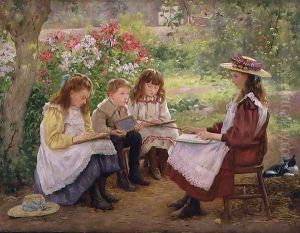Ada (nee Holland) Shirley-Fox Paintings
Ada Shirley-Fox, born Ada Holland in 1876, was an English artist whose life details are somewhat obscure, as is common with many women artists of her time. Not much is known about her early life or her death, but her work during her active years is testament to her skills as an artist.
Ada's career as an artist began to gain traction in the late 19th and early 20th centuries. She married a man with the surname Shirley-Fox, which she adopted as part of her professional name. This was a common practice for women who wished to maintain their own identities and careers after marriage. Ada Shirley-Fox is primarily known for her watercolors, which often featured landscapes, flowers, and occasionally, genre scenes with figures.
Her style was typical of the period, characterized by a delicate touch and a keen eye for the subtleties of light and color. She was particularly adept at capturing the English countryside, which was a popular subject among artists and the public alike during this era. Shirley-Fox exhibited her work at the Royal Academy and other venues, which was an impressive accomplishment for a woman at that time, as the art world was largely male-dominated.
Despite her talent and the recognition she received during her lifetime, Ada Shirley-Fox, like many female artists of her era, has not been widely remembered in the annals of art history. Her works may be held in private collections or in smaller local museums, but they have not received the same level of attention as those of her male contemporaries. The lack of comprehensive records about her life and death further contributes to the difficulty in constructing a full biography.
The date of Ada Shirley-Fox's death remains unrecorded, which is not unusual for artists who did not reach a level of enduring fame. It is possible that more information about her life and works may emerge as art historians continue to uncover and reassess the contributions of women in the art world. Until then, she remains a figure representative of the many talented women whose work was underappreciated in their time and subsequently overshadowed by their male counterparts.
